Keeping prices low is the key to heading off future threats. By Liz Hamson
When Asda knocked Sainsbury off the number two spot in the supermarket league table last August, chief executive Tony DeNunzio’s delight was bitter sweet. With Tesco’s position looking increasingly unassailable and Morrisons in the ascendant following its takeover of Safeway, analysts were questioning whether Asda would be able to continue as a strong every day low pricing player when two rivals were bolstering their EDLP fire power with aggressive promotions and price cuts.
In a rare state of the nation address to retail commentators gathered at Asda’s newly refurbished Handsworth store, Sheffield, an upbeat DeNunzio concedes the Wal-Mart-owned chain faces some serious competition in the months ahead, but insists that despite the obstacles placed in its path by the Competition Commission, it will be able to put up a good fight as long as its prices are lower than anyone else’s.
First, though, DeNunzio is keen to dispel some of the myths that cropped up following Wal-Mart’s acquisition of the Leeds based company on June 14, 1999.
Number one is the suggestion that the retailer would carpet the country with big box units. “In reality we are a multi-format retailer,” he says. “We have small stores, superstores and Asda Wal-Mart supercentres. The reason we’ve only got 12 [supercentres] is not because we don’t have enough general merchandise but because it’s a precious format.”
DeNunzio is equally dismissive of the suggestion that Asda was a poor recruiter. “We were in the top 10 of the Sunday Times Best UK Companies to Work For list three years running,” he boasts.
“This year we’ve slipped, but if you look at the size of the other companies listed, all 99 don’t add up to our size in terms of numbers of staff[with over 130,000
employees]. And, we have the highest proportion of over 50s of any UK company.”
He reels off some of the other dire predictions that have not come to pass.“They said there would be a flood of US products. It’s actually been a two way street. They said we’d stop buying British but we’ve extended local sourcing to 758 lines that amount to £54m sales a year. They said we’d be overrun by general merchandise. We are and always will be first and foremost a food business. We do attract customers just for our general merchandise but for a long time to come we’ll be a food first business.”
Warnings that the retailer would become beholden to Bentonville or that it would ditch its commitments to the community have proved equally unfounded, he says, as has the predicted brain drain. “Yes, there were quite a few people who left, but the people who are leading the business now are all home grown talent and we’ve also attracted people from elsewhere.”
In fact, DeNunzio only holds his hands up to one “offence”. “They said prices would tumble. Guilty as charged,” he grins.
A lot has improved at Asda since the takeover. It has grown its weekly customer base from 7.5m to 13m and its market share to 16.6%, according to the latest TNS 12-week till roll data. Home grown George has been a huge success and so critical has non-food offer as a whole become to the mix that Asda is introducing 5,000 new lines this year - double the number it introduced last year (although it will also shed some of its existing 20,000 lines).
Nevertheless, warn some analysts, at three and a half years old, its “formula for growth” strategy is beginning to look a bit long in the tooth - particularly now that Morrisons appears to have joined Tesco in tagging promotions onto EDLP.
Even if the strategy proves sound, there is still the question of how to physically grow the business now that the Competition Commission has effectively vetoed major acquisitions. As one analyst puts it bluntly: “The Competition Commission has probably done more damage than can possibly be perceived. Asda and Sainsbury can probably never assail Tesco’s position.”
DeNunzio remains convinced that a pure EDLP strategy works. “We can compete as long as we are the lowest price,” he argues, claiming that even following the Morrisons price cuts, a Safeway basket is 15% more expensive than an Asda basket.
He admits he was “disappointed” that Asda was not allowed to pick up more Safeway stores, but insists that rumours that Asda is looking into convenience stores are not true. “We’ve deliberately not moved into convenience on the basis that for customers it means higher prices,” he says, citing Asda research that suggests Sainsbury and Tesco charge 5.5% more for convenience goods. He adds: “We abide by the definition of the Competition Commission that a convenience shop is less than 15,000 sq ft. Anything above that we’ll trade in.”
DeNunzio is reluctant to disclose how much growth he’s looking to achieve through store extensions and mezzanine developments like Handsworth, saying only: “We’ll look to optimise our current stores.”
Asda will also no doubt look to leverage its burgeoning non-food offer, though he is equally tight-lipped about speculation that it is one of the front runners in the race for Matalan or that it is interested in any of the Dixons stores.
Meanwhile, the retailer is gearing up to roll out RFID soon after the US, hints DeNunzio. “We were waiting to see what happens,” he says, adding that it is already working on improving instore availability. Morrisons and Tesco do a good job, he says, admitting: “We still have some way to go.”
Now that Sainsbury has joined the price cutting fray, Morrisons is not the only one nipping at Asda’s heels.
As for the chances of catching up with Tesco, which has twice as many stores as Azda, DeNunzio is realistic. “It’s a challenge. It would require a structural change [of the industry] in the short term or a major out performance by us in the long term. You should ask the Competition Commission.”
2003-2004: Like-for-like sales growth (%) - upper single digit; like-for-like food sales growth - upper/mid single digit; like-for-like non-food sales growth - double digit.
George: Two standalones, in Croydon and Leeds; two more opening this month in Northampton and Preston. £1bn annual sales in the UK. Overtook Debenhams last month to become the UK’s third largest clothing retailer, according to 12-week TNS Fastrak data to April 4.
Mezzanines: 10 by end of the year.
Home Shopping: Roll-out to 40% of UK stores by end of the year.
When Asda knocked Sainsbury off the number two spot in the supermarket league table last August, chief executive Tony DeNunzio’s delight was bitter sweet. With Tesco’s position looking increasingly unassailable and Morrisons in the ascendant following its takeover of Safeway, analysts were questioning whether Asda would be able to continue as a strong every day low pricing player when two rivals were bolstering their EDLP fire power with aggressive promotions and price cuts.
In a rare state of the nation address to retail commentators gathered at Asda’s newly refurbished Handsworth store, Sheffield, an upbeat DeNunzio concedes the Wal-Mart-owned chain faces some serious competition in the months ahead, but insists that despite the obstacles placed in its path by the Competition Commission, it will be able to put up a good fight as long as its prices are lower than anyone else’s.
First, though, DeNunzio is keen to dispel some of the myths that cropped up following Wal-Mart’s acquisition of the Leeds based company on June 14, 1999.
Number one is the suggestion that the retailer would carpet the country with big box units. “In reality we are a multi-format retailer,” he says. “We have small stores, superstores and Asda Wal-Mart supercentres. The reason we’ve only got 12 [supercentres] is not because we don’t have enough general merchandise but because it’s a precious format.”
DeNunzio is equally dismissive of the suggestion that Asda was a poor recruiter. “We were in the top 10 of the Sunday Times Best UK Companies to Work For list three years running,” he boasts.
“This year we’ve slipped, but if you look at the size of the other companies listed, all 99 don’t add up to our size in terms of numbers of staff[with over 130,000
employees]. And, we have the highest proportion of over 50s of any UK company.”
He reels off some of the other dire predictions that have not come to pass.“They said there would be a flood of US products. It’s actually been a two way street. They said we’d stop buying British but we’ve extended local sourcing to 758 lines that amount to £54m sales a year. They said we’d be overrun by general merchandise. We are and always will be first and foremost a food business. We do attract customers just for our general merchandise but for a long time to come we’ll be a food first business.”
Warnings that the retailer would become beholden to Bentonville or that it would ditch its commitments to the community have proved equally unfounded, he says, as has the predicted brain drain. “Yes, there were quite a few people who left, but the people who are leading the business now are all home grown talent and we’ve also attracted people from elsewhere.”
In fact, DeNunzio only holds his hands up to one “offence”. “They said prices would tumble. Guilty as charged,” he grins.
A lot has improved at Asda since the takeover. It has grown its weekly customer base from 7.5m to 13m and its market share to 16.6%, according to the latest TNS 12-week till roll data. Home grown George has been a huge success and so critical has non-food offer as a whole become to the mix that Asda is introducing 5,000 new lines this year - double the number it introduced last year (although it will also shed some of its existing 20,000 lines).
Nevertheless, warn some analysts, at three and a half years old, its “formula for growth” strategy is beginning to look a bit long in the tooth - particularly now that Morrisons appears to have joined Tesco in tagging promotions onto EDLP.
Even if the strategy proves sound, there is still the question of how to physically grow the business now that the Competition Commission has effectively vetoed major acquisitions. As one analyst puts it bluntly: “The Competition Commission has probably done more damage than can possibly be perceived. Asda and Sainsbury can probably never assail Tesco’s position.”
DeNunzio remains convinced that a pure EDLP strategy works. “We can compete as long as we are the lowest price,” he argues, claiming that even following the Morrisons price cuts, a Safeway basket is 15% more expensive than an Asda basket.
He admits he was “disappointed” that Asda was not allowed to pick up more Safeway stores, but insists that rumours that Asda is looking into convenience stores are not true. “We’ve deliberately not moved into convenience on the basis that for customers it means higher prices,” he says, citing Asda research that suggests Sainsbury and Tesco charge 5.5% more for convenience goods. He adds: “We abide by the definition of the Competition Commission that a convenience shop is less than 15,000 sq ft. Anything above that we’ll trade in.”
DeNunzio is reluctant to disclose how much growth he’s looking to achieve through store extensions and mezzanine developments like Handsworth, saying only: “We’ll look to optimise our current stores.”
Asda will also no doubt look to leverage its burgeoning non-food offer, though he is equally tight-lipped about speculation that it is one of the front runners in the race for Matalan or that it is interested in any of the Dixons stores.
Meanwhile, the retailer is gearing up to roll out RFID soon after the US, hints DeNunzio. “We were waiting to see what happens,” he says, adding that it is already working on improving instore availability. Morrisons and Tesco do a good job, he says, admitting: “We still have some way to go.”
Now that Sainsbury has joined the price cutting fray, Morrisons is not the only one nipping at Asda’s heels.
As for the chances of catching up with Tesco, which has twice as many stores as Azda, DeNunzio is realistic. “It’s a challenge. It would require a structural change [of the industry] in the short term or a major out performance by us in the long term. You should ask the Competition Commission.”
2003-2004: Like-for-like sales growth (%) - upper single digit; like-for-like food sales growth - upper/mid single digit; like-for-like non-food sales growth - double digit.
George: Two standalones, in Croydon and Leeds; two more opening this month in Northampton and Preston. £1bn annual sales in the UK. Overtook Debenhams last month to become the UK’s third largest clothing retailer, according to 12-week TNS Fastrak data to April 4.
Mezzanines: 10 by end of the year.
Home Shopping: Roll-out to 40% of UK stores by end of the year.










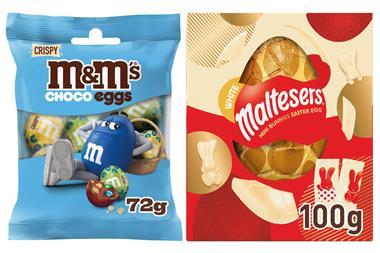

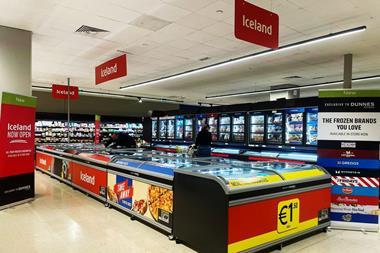
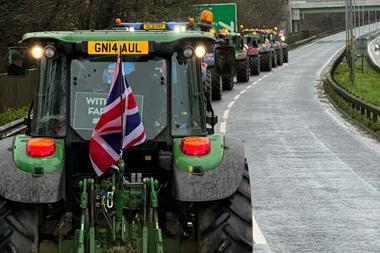

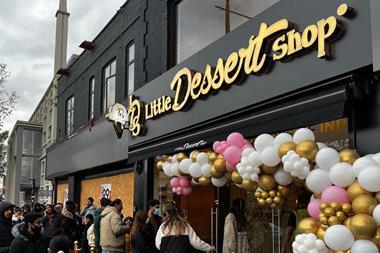
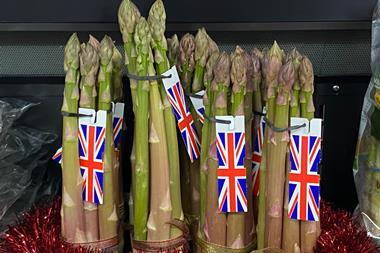
No comments yet